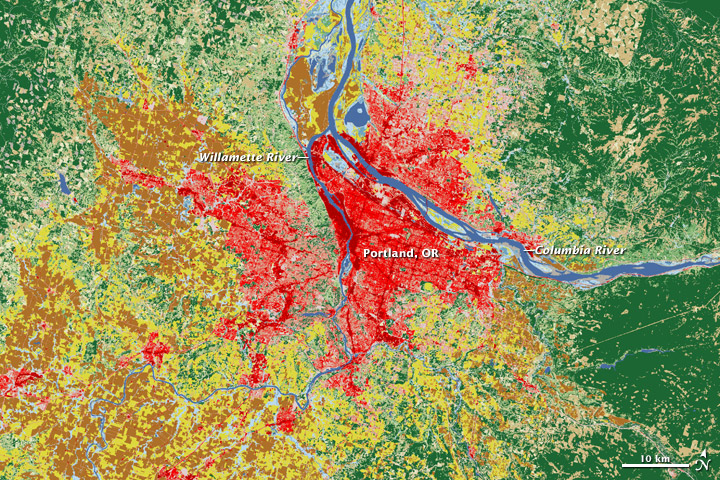Alessandro Boticelli - Primavera
Frühlingslied
Er kömmt in seiner Herrlichkeit
Der holde Lenz hernieder
Und schenket seine Wonnezeit
Dem Erdenkreise wieder;
Er malt die Wolken mit Azur,
Mit Gold der Wolken Rände,
Mit Regenbogen Tal und Flur,
Mit Schmelz die Gartenwände;
Er kleidet den entblößten Baum,
Deckt ihn mit einer Krone,
Daß unter seinem Schattenraum
Das Volk der Vögel wohne.
Wie preiset ihrer Lieder Schall
Die Wunder seiner Rechten,
Die Lerch am Tage, Nachtigall
In schauervollen Nächten!
Die Fische scherzen in der Flut,
Die Herden auf der Weide,
Es schwärmt der Bienen junge Brut
Auf der beblümten Heide.
Der Mensch alllein, der Schöpfung Haupt,
Vergräbet sich in Sorgen,
Ist immer seiner selbst beraubt,
Lebt immer nur für morgen;
Ihn weckt Auroras güldner Strahl,
Ihm lacht die Flur vergebens,
Er wird, nach selbstgemachter Qual,
Der Henker seines Lebens,
Das ohnehin wie ein Gesicht
Des Morgentraums entfliehet,
Und vor ein schreckliches Gericht
Ihn, den Verbrecher, ziehet.
Canción primaveral
Ella baja en su esplendor,
la benigna primavera,
y su gozo, como un don,
a la tierra reintegra;
de azur las nubes pinta,
de oro orla las nubes,
de arco iris valle y campiña,
de esmalte el jardín se cubre;
el desnudo árbol adorna,
con una copa lo viste,
por que en espacio de sombra
el alado pueblo habite.
¡Cómo loa del canto el son
los prodigios de sus fueros,
diurna alondra, ruiseñor
en noches plenas de miedo!
El pez retoza en las ondas,
en el prado las manadas,
jóvenes abejas rondan
por la florecida landa.
Sólo el hombre, la cabeza
de la creación, se hunde en ansias,
privado de sí, no cesa
de vivir para mañana;
de Aurora lo hiere en vano
rayo áureo, y ríe la campiña:
se tortura, transformado
en verdugo de su vida,
que, sin más, como visión,
del sueño huye matinal
y arrastra al malhechor
al terrible tribunal.
(Traducción: Héctor A. Piccoli)
Robert Roberthin, Pseudonym: Berrintho, (* 3. März 1600 in Saalfeld/Ostpreußen; † 7. April 1648 in Königsberg) war ein deutscher Dichter der Barockzeit.
Leben
Als Sohn eines Pfarrers geboren, studierte Roberthin ab 1617 Rechtswissenschaft in Königsberg, Leipzig und Straßburg. Als drei Jahre später sein Vater stirbt, tritt er eine Stelle als Hofmeister an. Zahlreiche Reisen führen ihn nach England, Frankreich, Italien und Holland. Er wird brandenburgischer Rat und Obersekretär bei der Regierung in Königsberg.
Roberthin war mit dem schlesischen Dichter Martin Opitz befreundet. Er entdeckte und förderte den Dichterkollegen Simon Dach, der für ihn das von Heinrich Albert vertonte Begräbnislied „Ich bin ja, Herr, in deiner Macht“ dichtete.
Roberthin war der geistige Mittelpunkt der Königsberger Kürbishütte.
Werk
Roberthin verfasste zahlreiche geistliche und weltliche Lieder, die „durch Leichtigkeit und Innigkeit die gelehrte Lyrik der schlesischen Schule übertreffen“ (Meyers Lexikon, 1888). Er ließ sie unter dem Pseudonym „Berrintho“ in Heinrich Alberts „Arien zum Singen und Spielen“ (Königsberg 1638) erscheinen.
Literatur (Auswahl)
Thomas Diecks: Roberthin, Robert. In: Neue Deutsche Biographie (NDB). Band 21. Duncker & Humblot, Berlin 2003, S. 680 f.
August Gebauer: Simon Dach und seine Freunde als Kirchenliederdichter. Tübingen 1828
Hermann Oesterley: Robert Roberthin. In: Altpreussische Monatsschrift, 12 (1875), 27-50
Leopold Hermann Fischer: Nachträge zu Oesterley. In: Altpreussische Monatsschrift, 22 (1885), 606-617
Oesterley: Roberthin, Robert. In: Allgemeine Deutsche Biographie (ADB). Band 28, Duncker & Humblot, Leipzig 1889, S. 722 f.
http://de.wikipedia.org/wiki/Robert_Roberthin
Gedichte - Poesia: Robert Roberthin - Frühlingslied - Canción primaveral - Deutsch - Español - Links zu weiteren deutschen Dichter - Links a más poetas alemanes
Bertolt Brecht
Kurt Tucholsky
Heinrich von Morungen
Walther von der
Vogelweide
Gedicht
- Poesia: Walther von der Vogelweide - 1170-1228 - Dêswâr , Reinmâr.
dû riuwes mich - Bajo el tilo sobre el prado - Links
Johannes Bobrowski
Angelus Silesius
(Johann Scheffler)
Gedicht
- Poesia: Angelus Silesius (Johann Scheffler) - Breslau 25. 12. 1624 (?) , †
ibíd. 9. 7. 1677 - Cherubinischer Wandersmann - Peregrino Querubínico - Part 1
- Bio Links
Paul Fleming
Daniel
Casper von Lohenstein (1635-1683)
Simon
Dach
Gottlob Friedrich Wilhelm Juncke
Gryphius, Andreas
(Andreas Greif)
Friedrich von Logau
Friedrich Hölderlin
Ricardo M Marcenaro - Facebook
Operative blogs of The Solitary Dog:
solitary dog sculptor:
http://byricardomarcenaro.blogspot.com
Solitary Dog Sculptor I:
http://byricardomarcenaroi.blogspot.com
Para:
comunicarse conmigo,
enviar materiales para publicar,
propuestas:
marcenaroescultor@gmail.com
For:
contact me,
submit materials for publication,
proposals:
marcenaroescultor@gmail.com
Diario La Nación
Argentina
Cuenta Comentarista en el Foro:
Capiscum
My blogs are an open house to all cultures, religions and countries. Be a follower if you like it, with this action you are building a new culture of tolerance, open mind and heart for peace, love and human respect.
Thanks :)
Mis blogs son una casa abierta a todas las culturas, religiones y países. Se un seguidor si quieres, con esta acción usted está construyendo una nueva cultura de la tolerancia, la mente y el corazón abiertos para la paz, el amor y el respeto humano.
Gracias :)















